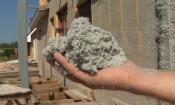Search
Login
Recommended
Rules for preparing a lawn for winter on a personal plot
What the lawn will look like next year depends only on the measures taken by the gardener. Throughout the summer period, the green lawn was subjected to high temperatures, frequent mowing, and was used as a place for games and recreation. The time has come to help the delicate cover - peel off the leaves, strengthen to the winter cold, remove weeds and protect from moles.
Content
- Lawn cleaning
- Lawn mowing video
- Lawn fertilizer in autumn video
- Manure Fertilizer
- Aeration and scarring
- Weeds on the lawn
- Lawn sowing
- Mole Protection video
Lawn cleaning
How to prepare a lawn for winter? First of all, clean it of debris and fallen leaves. Fallen foliage under a layer of snow deprives the grass of oxygen, causes decay and blocks access to sunlight. Foliage from the lawn can cover other plants to protect from winter cold or add it to compost.
Lawn mowing
Too short mowing of the lawn causes the roots of the grass to freeze, tall grass often suffers from the development of pathogenic fungi. The optimal grass height after the last mowing is 4 cm. The term for this procedure depends on weather conditions.
In cool autumn, mowing is possible in mid-October or a week before the first frosts, if autumn is warmer than usual, mowing is debugged before the beginning of November. Mowed grass is not left on the lawn; during autumn rains, it is covered with mold and infects fungal diseases throughout the area.
Lawn fertilizer in autumn
The lawn in autumn needs proper top dressing, this will help increase grass resistance to low temperatures. From the beginning of September, give up nitrogen fertilizers, nitrogen promotes plant growth, delaying the transition to winter rest, which will lead to serious damage to the grass.
Pay attention to fertilizers containing potassium and phosphorus, which increase the resistance of plants to frost. For example, it can be potassium salt (800 gr. Per 100 m2) and phosphorite flour (the rate of introduction of flour is set depending on the pH of the soil). Mineral fertilizers are used in liquid or dry form after a planned mowing of the lawn at the end of September. A young, autumn lawn does not fertilize, it takes nutrients from the seeds.
Manure Fertilizer
Preparation of the lawn for winter is very rarely carried out with the help of such organic fertilizers as manure, which is a pity, because it perfectly compensates for the absence of many elements that are not found in mineral fertilizers. Early use of manure stimulates the growth of the lawn, which we do not need, therefore it is introduced during the first frosts.
The manure is scattered on the lawn with a thin layer, throughout the winter the fertilizer will feed the plants and prepare for intensive growth. In the first year after applying manure, fertilizing the lawn with other miners is not required. But remember that manure is used only once every 3-4 years.
Also pay attention to the fact that manure increases the activity of soil insects and worms, and they are the main food for moles, if the lawn was subject to mole attacks in previous years, this type of fertilizer should be discarded.
Aeration and scarring
Scarring is done after the lawn has been cut so that the plants can recover quickly after the intervention. Scarring removes moss, weak and dry grass roots, the action is performed using a scarifier.
Aeration is puncturing the soil with a special tool or lawn mower, this procedure is carried out in late August. Under the influence of aeration, the roots of the plants become stronger, the soil is leveled, and the regeneration of the lawn after winter is significantly accelerated.
Weeds on the lawn
The lawn is cleared of weeds for the winter. In autumn, lawn grass slows its growth, which cannot be said about the growth of weed grass. In spring, weeds can clog even the healthiest and fastest growing lawn. In the fight against weeds, try not to use fungicides, they can damage the autumn grass, try to remove them manually during wet weather. In spring, the remaining weeds can be sprayed with herbicidal substances.
Lawn sowing
After the last mowing, aeration and scarring, lawnless grass sections are noticeable. If you remember what grass or lawn mixture is growing on the lawn, open soil is sown again. Sometimes a gardener cannot remember the type of grass on the lawn, and sowing other seeds is an unsuccessful decision - the shade of the grass will differ. In this case, resort to local decoration with stones, garden figures, shrubs.
Autumn is the perfect time to expand the lawn. Before sowing, you should remove all weeds and stones, determine the type of soil. Sand is added to clay soil. Very acidic soil is fertilized with calcium, the most suitable fertilizer for this purpose is dolomite limestone.
Mole Protection
Caring for the lawn in the fall will be unproductive if moles destroy it, so before the onset of winter it is advisable to think about their possible invasion. The activity of these animals increases in the fall, when fertile and moist soil contains numerous larvae - a favorite treat of a mole. For preventive repelling moles, it is advisable to use repellents or traps.
A lawn mower deserves the same care as a lawn. Prepare the tool for the next spring by removing grass and earth from it, check the technical condition of the mower - sharpen the knives, grease with oil, empty the fuel tank.





